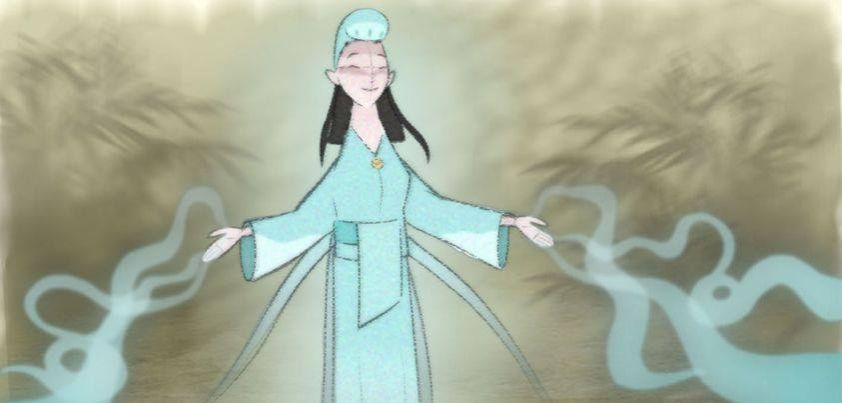 As indicated in our comments on the famous children’s story Cinderella, there are hundreds of folktales around the world that have the similar central plots. This Vietnamese version is longer and continues after the protagonist becomes Queen. The story from here on could only happen in a folktale from a country where people believe that after we die we can be born again in non-human form. The poor girl is killed twice after marrying the king, each time coming back to life in a different form. Fortunately, goodness wins out and the evil stepsister soon finds herself in hot water.
As indicated in our comments on the famous children’s story Cinderella, there are hundreds of folktales around the world that have the similar central plots. This Vietnamese version is longer and continues after the protagonist becomes Queen. The story from here on could only happen in a folktale from a country where people believe that after we die we can be born again in non-human form. The poor girl is killed twice after marrying the king, each time coming back to life in a different form. Fortunately, goodness wins out and the evil stepsister soon finds herself in hot water.
Original Text / PDF (2,500 words)
General Comments
In the version of Tam and Cam presented here the story ends with the comment:
The Queen [Tam} … lived happily ever after, for she certainly deserved it.
In Western. Christian influenced terms it is hard to see how it could be argued that Tam was so good as be worthy of life-long happiness. At the end of the story she caused her stepsister Cam to be boiled alive. Another version of the story has an even more horrible ending where Tam had Cam’s body cut up, cooked and turned into a sauce which she tricked her stepmother into eating with her meals. The sauce was so delicious that the stepmother ate it every day until she found Cam’s head at the bottom of the jar and immediately fell down dead. If we were able to look back at original versions of many English children’s favorites, we would find examples of equally bad things happening to those who do wrong.
There is some interesting symbolism in Tam and Cam which is distinctly Asian. Near the beginning of the story we see this description:
“The poor little Tam worked and worked all day. Her skin became dark and her hair messy. Sometimes when she went to get water, she looked at herself in it and was surprised to see how dark and ugly she was. She would then take up some water in her hand, wash her face and comb her long straight hair with her fingers. The soft white skin appeared again, and she looked pretty again. But when the stepmother saw how pretty Tam could look, she hated her more than ever and wished to make her life worse.”
And then at the end of the story Tam’s stepsister Cam asks her:
“Dearest sister, how could I become as white as you?”
As well as the obvious thought that Tam’s light skin and Cam’s dark skin may represent good and evil, some Asian culturs embraces a stereotype that dark-skinned people are of a lower social standing than light-skinned people. This seems to come from the idea that the family of dark-skinned people must be poor and uneducated and therefore have to earn a living by working in the sun. Because of this, one of the biggest selling personal care products in that part of the world is skin-whitening cream. In the West the opposite applies; many people like to have a “healthy” browning of the skin to show that they have the time and money to relax outdoors. Cam’s terrible end may not have come from all the bad things she did, but from wanting to change the color of her skin. This seems a very important teaching for a feudal society such as ancient Asia, where the last thing those in power would have wanted was for the masses to try to improve their position.